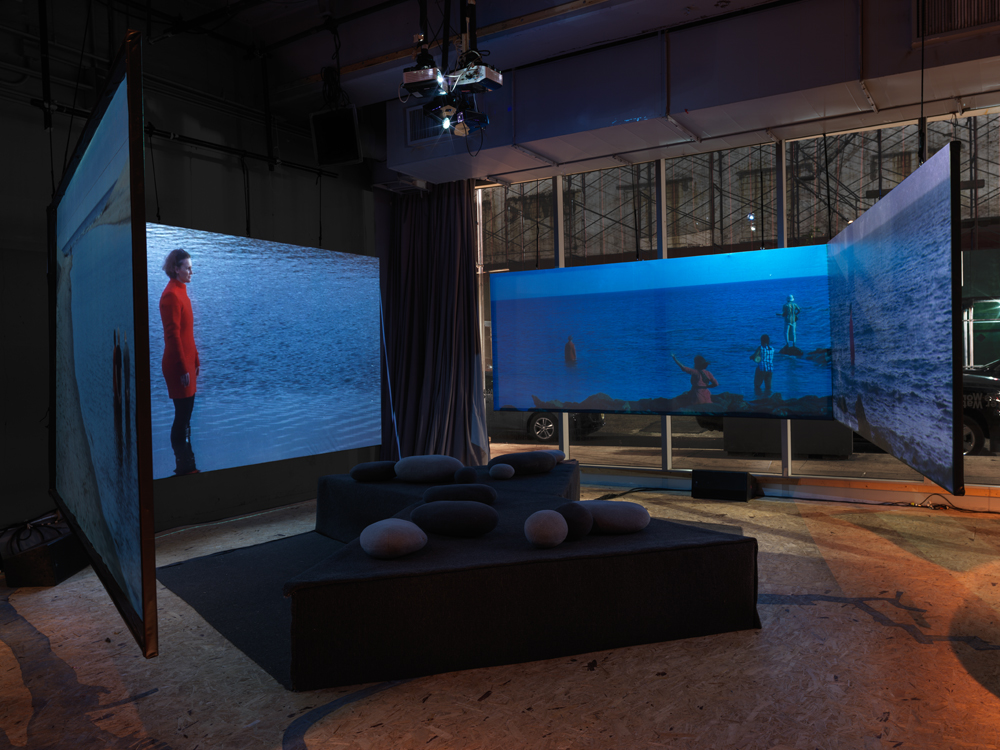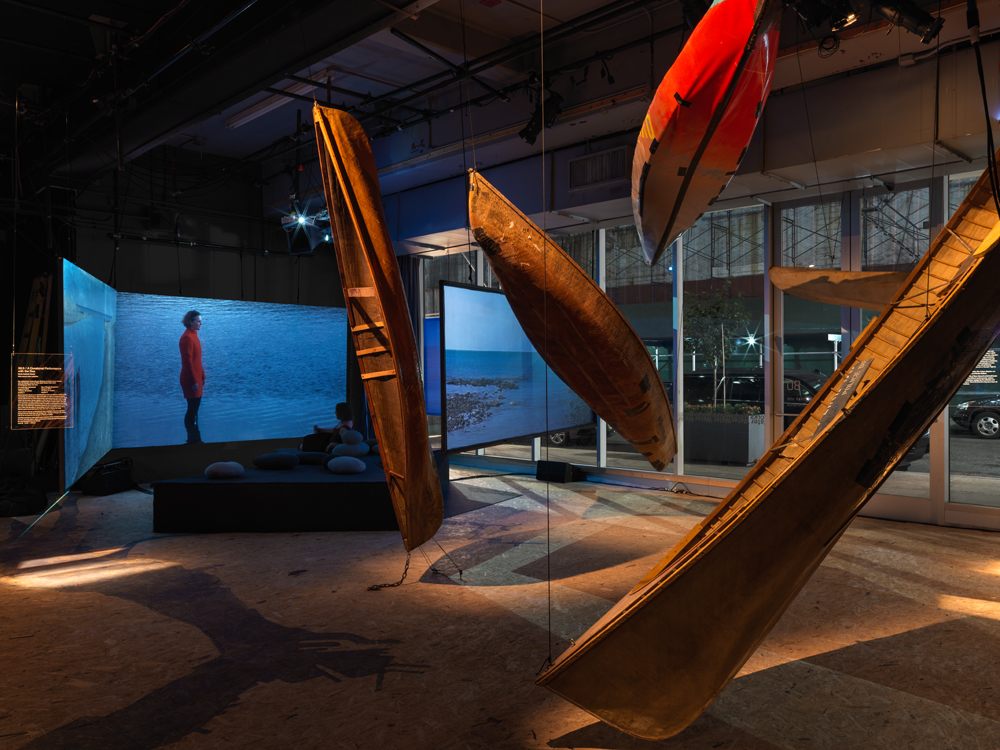“In the spring of 2016, there was a conversation brewing in New York City within a community of artists who make work on, in, and with the water. As artists were increasingly turning to bodies of water as a site and/or a material, there was an acknowledged need to frame this practice as a movement.
Artist and urban interventionist Eve Mosher formed an online group of “urban water-makers” and invited colleagues to share resources. Artist Nancy Nowacek suggested the need for a biennial. We all saw a strong need for multidisciplinary thinking and cross-sector collaboration.
At the same time, New Georges, the downtown theater company where I was Deputy Artistic Director (2001–2017), was beginning to plan a production at 3LD Art & Technology Center focusing on the global water crisis. The theater artists creating wanted their play to speak within a larger context. I saw an opportunity to bring these works into conversation with each other: visual art and theatrical performance in the same space; artists in dialogue with scientists, urban planners, and other practitioners—all addressing the increasingly urgent topic of water. New Georges was brave enough to let me run with the idea, and we jumped into the planning process of creating a large-scale interdisciplinary event that became an inaugural triennial, Works on Water: 26 Days of Art and Theater, in June 2017.
The original Works on Water curatorial team formed organically, based on the people I was having conversations with. We are all cultural producers with big vision: Nancy and Eve are both solidly rooted in the visual arts community and have many years of experience working with New York City’s waterways. My own artwork lives at the intersection of visual art and performance, and Hurricane Sandy had turned me toward the sea. Clarinda Mac Low and Katie Pearl both have strong histories of making socially engaged performance-based work. Emily Blumenfeld offers an art-historical perspective and comes with extensive experience curating and producing public art.
In the fall of 2016, a few of us formed a working group through the School of Apocalypse at Pioneer Works to interrogate our intuitive sense of what we had started to call “Works on Water” or “Water Art.” We wondered: who else was making work on, in, or with the water? How could we frame our emerging practices for a wider public? Over the course of three months, we collected over 200 projects that defined themselves as Water Art. We theorized, debated, and narrowed the scope by mapping (both geographically and relationally) the projects that fit our criteria:
The work must meet BOTH of the following conditions:
1. The work self-defines, first and foremost, as art.
2. A body (or bodies) of water is central to the work’s concept.
Additionally, the work recognizes that water is alive and dynamic, and therefore experiential rather than representational. It must meet at least ONE of the following conditions:
1. If object-based, a body of water (and/or its shorelines) is used as MATERIAL in the physical production of the work.
2. If time-based, a body of water and/or its shorelines is the SITE for the work, functioning as a “stage” and/or a central “character” that embodies the temporality and/or spatiality of the work.”
– Above statement is excerpted (and edited for context) from my introductory essay in the Works on Water 2017 Triennial Catalogue, “Environmental Art for the 21st Century”
Download Works on Water’s HYDROFESTO here. If you identify with these statements, you are a Water Artist. Join us!




